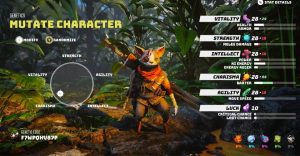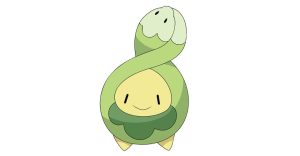Pokémon Lore That Legends: Arceus Totally Retcons

Pokémon Legends: Arceus is very different from traditional Pokémon games, but it completely rewrites several pieces of in-game lore. It’s not unusual for Pokémon lore to evolve as more games are released, but Pokémon Legends: Arceus had the advantage of being a prequel. In addition, Pokémon exists in various entertainment mediums that tend to adjust lore when needed, such as its manga and anime counterparts. However, as a core series game, Pokémon Legends: Arceus‘ retcons will likely stick around for the long haul and become an established piece of the franchise.
Pokémon Legends: Arceus takes place in Hisui, also known as the Ancient Sinnoh region, and takes place hundreds of years before the Pokémon Diamond and Pearl games. Players join the Galaxy Expedition Team to help chart the Hisui region and its fauna. As a member of the Survey Corps, players explore five different areas with complete freedom; catching, battling, and interacting with wild Pokémon helps fill Professor Laventon’s Pokédex. However, the player’s primary goal is to capture every Pokémon in the region to meet Arceus again. Legends: Arceus is a significant departure from other core series games but provides players with more opportunities to learn about the Pokémon world.
Pokémon lore and theories are constantly evolving as Nintendo produces new games, and it’s unavoidable that further information emerges with these titles’ Pokémon and regions, but Legends: Arceus takes these changes and helps players experience them. In previous games, players mainly depended on Pokédex entries, NPC dialogue, or battles with other Trainers and Pokémon to learn more about the native region, but Legends: Arceus helps players discover this information themselves. As players progress through the story, different Pokémon behaviors and truths in the timeline become apparent, which retcons many essential pieces of lore in the franchise.
Pokémon Legends: Arceus Shows Professor Oak Lied About The Pokédex

When Pokémon debuted with Pokémon Red and Blue, players met with Professor Oak in his lab and received instructions to fill out the Pokédex. However, Pokémon Legends: Arceus proves Professor Oak lied about the Pokédex being an original invention. When the first generation was released, Oak’s claim likely had some truth to it, but as other regions introduced hundreds of new Pokémon and the in-game timeline shifted, players discovered that Oak wasn’t the first to develop a Pokédex. In reality, Professor Laventon is likely the first Pokémon Professor to develop a Pokédex and coin the term given the game’s timeline. This critical change to Pokémon lore suggests that Professor Oak plagiarized his creation from Professor Laventon and claimed credit like Pokémon’s version of Thomas Edison.
Pokémon Legends: Arceus Change Sinnoh’s Origins

Pokémon Diamond and Pearl explored the Sinnoh region, home to Pokémon‘s beloved Gen 4 monsters, characters, and storylines. So, it came as a surprise to the community when the Sinnoh region was consistently called Hisui in Pokémon Legends: Arceus trailers. Other trailers began using Sinnoh as the name of a legendary creature. Since the founding history of the Sinnoh region was left largely undeveloped during Pokémon Diamond, Pearl, and Platinum, changing the region’s original name is a significant retcon of in-game lore.
Pokémon Legends: Arceus Makes Poké Ball Mechanics Stranger

One of the strangest retcons to Pokémon Legends: Arceus addresses the logic behind Pokémon sprites shrinking after fainting or fleeing from battle. While many players may have thought the shrinking animation was Nintendo’s method of avoiding uncomfortable explanations with a younger audience, Legends: Arceus confirms Pokémon can shrink themselves. This introduces many new complications with in-game battles and logic but explains how Pokémon can shrink into the Poké Balls players can create. Additionally, it changes how players can make their own Poké Balls from long-standing explanations in the franchise.
In Pokémon Silver and Gold, Nintendo informed players that Poké Balls originated from Johto, specifically the Apricots that grew native in the region. However, players quickly discover that more goes into crafting Poké Balls than Apricots. New resources like tumblestones and other raw materials are required to finish the recipe. Given Legends: Arceus‘ appearance for Poké Balls, it’s strange that rock has a place in the crafting recipe at all, as most appear to be made out of wood. Pokémon Legends: Arceus’ crafting recipe for Poké Balls and the new shrinking ability gifted to Pokémon combines to create another ethical dilemma for the capture devices. Nintendo explained that Poké Balls mirror a creature’s natural environment and act as a hotel room, but it’s unlikely wooden capture devices have that technological capability.
Dialga & Palkia Are Different In Pokémon Legends: Arceus

Dialga and Palkia are much different in Pokémon Legends: Arceus, but they’re unlike other Hisuian variants across the regions. There are several Legendary Pokémon with various forms, such as Mewtwo, Latios, and Latias, but Dialga and Palkia have Origin Formes that players can only unlock with treasures from the Diamond and Pearl Clans. Their Pokémon Legends: Arceus Origin Formes are quite similar to Arceus’ form, with each Legendary having led their respective Clan to believe they are the universe’s creator.
Unfortunately, this debacle has led to many conflicts between the Diamond and Pearl Clans, who only recently established some semblance of peace. As a result, each Legendary adapts a quadruped form with a flare around their shoulders or neck and a ring around their midsection to mimic Arceus’ proper form. While this references the statue in Eterna City that appears to be a combination of both legendaries, it fundamentally changes Sinnoh’s (and Hisui’s) history through misunderstanding and a new form of evolution.
Pokémon Legends: Arceus Retcons Indian Elephant Entries

Previous Pokédex entries for Raichu and Gastly referenced their ability to defeat an Indian Elephant with their attacks, suggesting the existence of non-Pokémon species in the universe. However, Legends: Arceus officially rewrites these Pokédex entries with the help of Copperajah, the elephant Pokémon in Generation 8. As more regions develop throughout the Pokémon world, players will likely encounter fewer real-world animals in Pokédex descriptions. Whether real-world animals will cease to be mentioned in-game from now on is unknown, but it’s possible these Pokédex entries foreshadowed the creation of future Pokémon all along. Either way, Legends: Arceus changes various Pokédex entries and drastically changes Raichu and Gastly’s Pokédex entries.
Pokémon Legends: Arceus changes many features in Pokémon lore, but it’s unknown how far-reaching these changes will be. Pokémon has a habit of introducing new lore or mechanics and abandoning them quickly after (like Mega Evolutions and Dynamax), but in-game worldbuilding is vital to continue the franchise. Pokémon Legends: Arceus explored a familiar region in a new way, but fans are likely anticipating an announcement from Nintendo concerning Generation 9 in the coming months. Whether Pokémon Legends: Arceus‘ gameplay, mechanics, and lore influences these upcoming games have yet to be seen, but its changes could introduce new storylines and storytelling possibilities for other regions.
About The Author

















